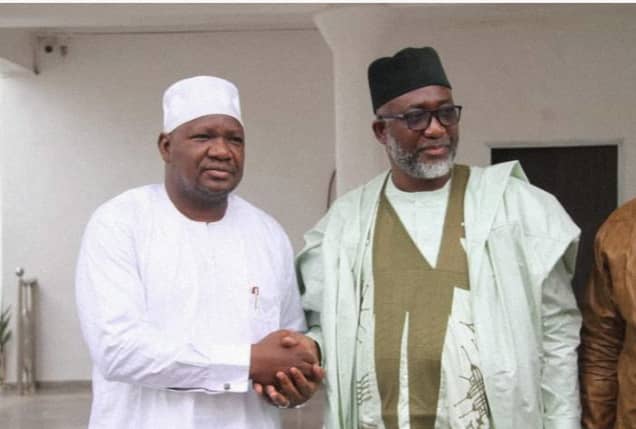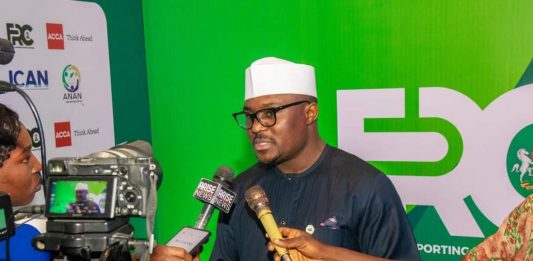The announcement by the Federal Government and subsequent approval by the National Assembly of the request to share N500 billion palliatives to poor and vulnerable households in Nigeria in order to cushion the adverse effect of the recent removal of fuel subsidy has continued to generate reactions on social and mainstream media as Nigerians continue to question its adequacy, mode of disbursement and sustainability. Aside from the fact that the N8,000 monthly disbursement to 12 million households for a period of six months will not make any meaningful impact on the lives of these Nigerians, many people have also expressed concerns and worries as to whether the money will get to the real beneficiaries and not end up in the private pockets of privileged people, considering the dearth of credible and up-to-date data in the country and lack of transparency that trail disbursement of palliatives in Nigeria.
Accurate data is a very scarce commodity in Nigeria. Data credibility and integrity is also a big issue in the country. The country has been relying on estimated figures since the last Population and Housing Census in Nigeria over 17 years ago. There is no comprehensive, reliable and verifiable database of poor and vulnerable people in the country which only census data can provide. The country has relied on the National Social Register (NSR) of poor and vulnerable households in Nigeria developed by the National Social Safety-nets Coordinating Office (NASSCO) for its social intervention programmes. As of April 2023, NASSCO has been able to enlist 15,724,871 households and 62,792,794 individuals into the NSR database. The number of the enumerated poor and vulnerable individuals in the National Social Register falls far below over 133 million people who are multidimensionally poor in Nigeria. That means that the number of poor Nigerians outside the register is more than those included in the register. Many poor Nigerians have been excluded from benefiting from palliatives. It’s also worrisome that only 17% of the individuals in the NSR have bank accounts while just 25% of them have valid means of identification. What it means is that only a small percentage of the poor citizens in the social register can be tracked with their identification number or bank verification number to ascertain whether they truly exist or fictitious names. Without verifiable means of identification of the vulnerable Nigerians, the social register will be susceptible to manipulation.
Although, NASSCO stated that it used a targeting and identification mechanism to build the National Social Register but the limited scope and inability to verify and track those individuals on the register makes it difficult to trust and rely on the database for planning.
The lack of a credible and unified database of the poor and vulnerable Nigerians affected the effective implementation of the National Social Investment Programme (NSIP) introduced by former president Muhammadu Buhari’s administration. The Buhari government introduced a Conditional Cash Transfer programme of N5,000 monthly grants to poor and vulnerable households, the National Home-Grown School Feeding Programme (NHGSFP), the Government Enterprise and Empowerment Programme (GEEP), N-Power etc to empower the unemployed youth and women and reduced poverty in the country but unfortunately the laudable projects failed to create the desired impact in improving the quality of lives of the poor and vulnerable Nigerians. Monthly, billions of naira were mapped out for these social investment programmes but the identity of the majority of the beneficiaries remains unknown to most Nigerians as everyone kept on asking who are the beneficiaries.
The Senate Public Account Committee while probing the N52 billion Special Public Works Programme coordinated by the National Directorate of Employment (NDE) to recruit 1,000 young Nigerians from each of the 774 LGAs for three months and pay them N20,000 each in 2020 demanded a list of the 774,000 Nigerian beneficiaries of the programme after some of its members disclosed that none of their constituents benefited from the programme. It then beats the imaginations of many to wonder about the database used for these intervention programmes, if senators could not identify their constituents among the beneficiaries.
No wonder that despite the efforts of the former President Muhammadu Buhari administration to lift 100 million Nigerians out of poverty in ten years but ended up plunging more Nigerians into poverty. The last administration met 60 million poor Nigerians upon the assumption of office in 2015 but left when the numbers increased to over 90 million. The numbers have increased further as the World Bank disclosed that no fewer than four million Nigerians were pushed into the poverty trap in the first six months of this year, with another 7.1 million more expected to join the conundrum if properly targeted measures are not taken to manage the impact of fuel subsidy removal.
Even the recent decision of the National Economic Council led by Vice President, Sen. Kashim Shettima to jettison the National Social Register for State Social Registers due to lack of credibility and reliability does not make any difference as the State Registers are a component of the NSR. If the NSR fails the data integrity test, it means State Registers will fail too. The only difference is that the disbursement of the palliatives will be done by the State Governments instead of the Federal Government.
Planning relies basically on data. The importance of planning with credible data to both an individual and a nation cannot be overemphasized in order to make efficient use of limited available resources for maximal satisfaction. Indeed, census data is the solution to the myriad of developmental challenges facing the county.
No country relies solely on its estimated population because such estimates ignore the demographics unearthed by census data which are needed for national planning purposes. A national population census, in addition to determining the actual number of people, also gives us important data on the distribution of the population by age, sex, location, household characteristics and socio-economic strata among others. This detailed information is critical to national planning and development. A country that doesn’t know its true population would definitely not be in a position to determine the actual number of its poor citizens.
To get comprehensive, up-to-date and reliable data for the disbursement of palliative to the poorest households and other national development planning, the Federal Government should as a matter of urgency fix a date for the National Population Commission to complete the Population and Housing Census exercise that was postponed by the previous administration.
The 2023 Census will be the first fully digital census in the history of Nigeria. NPC has introduced innovative digital technology to be used in the entire census process starting from the Enumeration Area Demarcation to pretesting of tools, recruitment, data quality management, monitoring & evaluation, project management, communications, main data collection, fieldwork monitoring and dissemination of census data.
The forthcoming census will be the first time the whole population and housing units in the country will be geocoded. It means that the 2023 Census will provide verifiable data on the Nigerian population and link each person to a location. Before now and as part of the preparatory activities for the upcoming census, the National Population Commission has successfully conducted Enumeration Area Demarcation (EAD) in the 774 LGAs and in the process captured all buildings in Nigeria with their geo-coordinates using Geographic Information System (GIS) technology. NPC has also collaborated with NIPOST to create a proper digital addressing system in the country using the EAD geospatial dataset of all buildings in Nigeria. So, the census exercise will be to enumerate every person in Nigeria and link them to a particular building or location. With that information, tracking, identifying and planning for the citizens will be easy.
In addition, the census will canvass questions on the economic characteristics of the respondents to reveal their employment status and type of economic activities done in the last 7 days preceding the census night, and the housing characteristics and amenities to collect information on their type of buildings, construction materials used for the buildings, number of sleeping rooms, ownership status, tenure status of the households living in the buildings, source of drinking water, type of lighting and cooking fuel, and other household assets.
Questions will also be asked on housing sanitation to generate information on the type and sharing status of toilet facilities and other sanitation measures; difficulty in performing activities to ascertain the number of persons living with disabilities; Information Communication Technology to collect information on ICT devices owned and access to internet facility; literacy and education characteristics; internal migration; fertility and child survival status; survival status of the parents; demographic background and social characteristics; the impact of climate change as well as other thematic areas.
With the detailed information, the 2023 Population and Housing Census will not only provide a credible and verifiable database of the poor and vulnerable Nigerians but also where they live. Sharing of palliatives with this correct census data of the vulnerable households will help the governments to target the right beneficiaries and create the necessary impact of uplifting these poor Nigerians.
President Tinubu should as a matter of urgency prioritise conducting the upcoming Population and Housing Census and use the census data as the foundational guide for evidence-based planning and implementation of his administration’s renewed hope agenda.
©️ Stanley O. Nwosu, a writer, image maker, photo journalist, public affairs analyst, and political economist, is the NPC Social Media Manager





